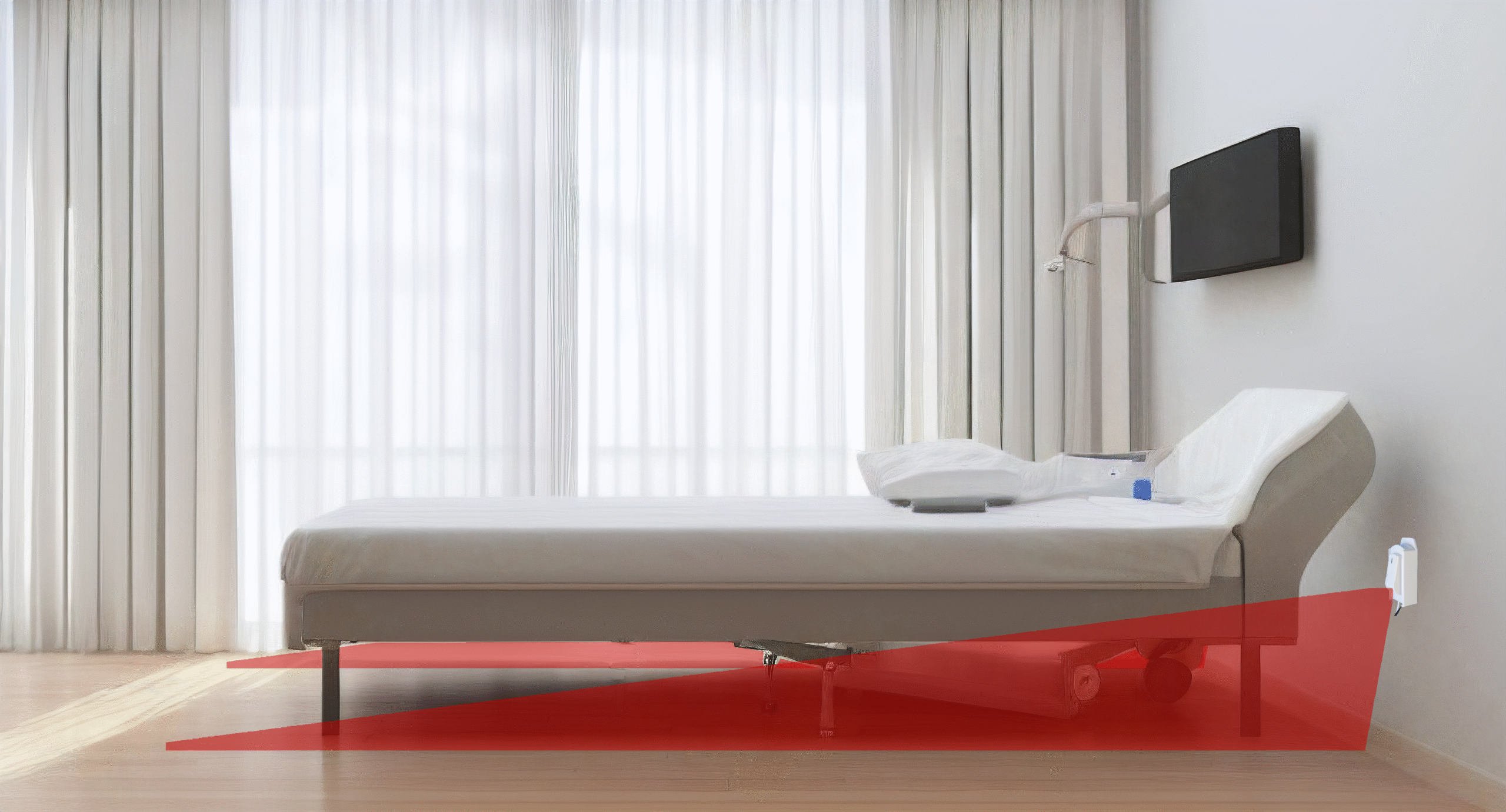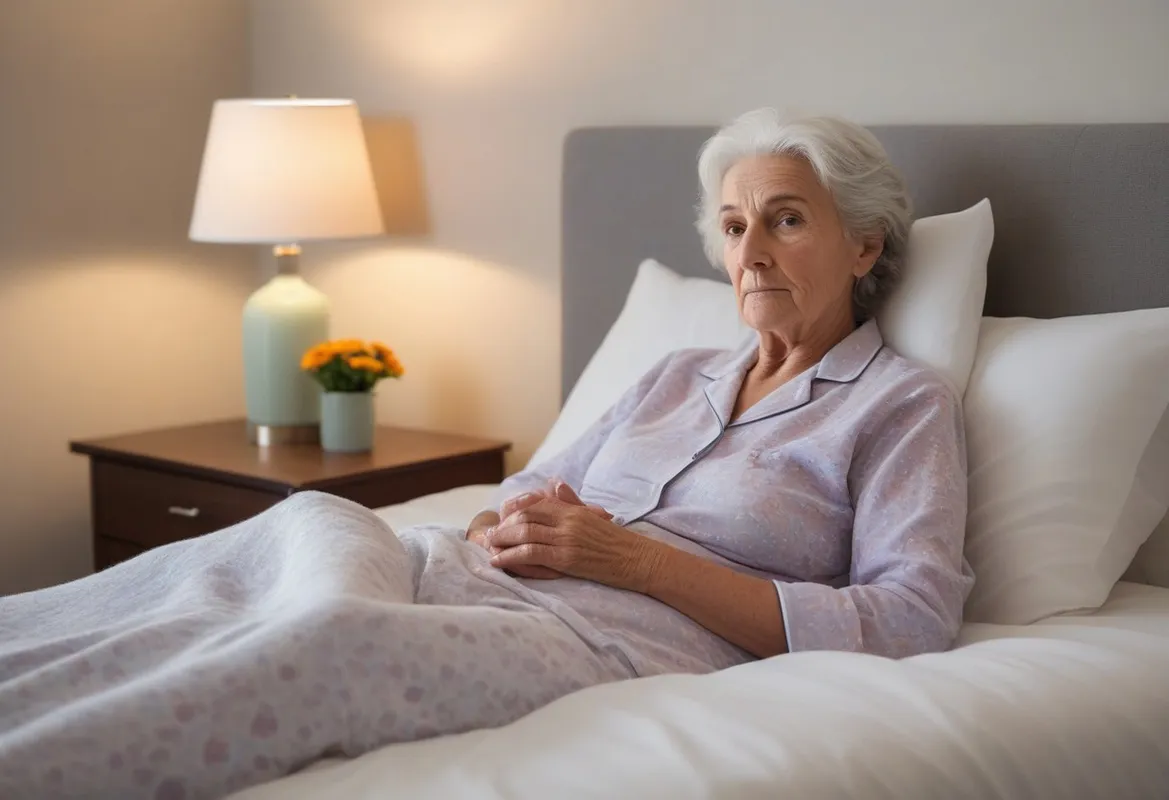Summary
The Safe-Life Dual PIR Bed Exit Sensor helped a South Australian aged-care facility replace unhygienic floor mats with a permanent, non-contact bed-exit monitoring system. This solution improved resident safety, reduced fall risks, and eliminated ongoing consumable costs.
What problems was this aged-care facility facing?
The facility relied on traditional bedside floor mats for fall detection. These mats created several operational, clinical and hygiene issues:
- Mats absorbed spills and bodily fluids, reducing hygiene.
- Mats had a short useful life and required replacement.
- Residents learned to avoid stepping on the mats.
- Cords and raised mat edges created extra hazards for staff and residents.
These factors reduced the effectiveness of the fall prevention program and increased workload for care staff.
What Safe-Life solution was introduced?
Safe-Life provided a Dual PIR Bed Exit Sensor for a no-obligation trial.
This device uses invisible infrared beams to detect when a resident commences to move out of bed, requiring no floor mats, no cords, and no contact surfaces.
The goal was to create a safe, efficient, hygienic, low-maintenance and uniform facility-wide bed exit alarm system.
How does the Safe-Life Bed Exit Sensor work?
The Dual PIR Bed Exit Sensor uses two narrow invisible infrared beams positioned along each side of the bed.
Process:
- The sensors project the invisible beams between the bed frame and floor.
- When a resident swings a leg off the bed, the beam breaks.
- The alarm sends an immediate notification through the nurse call system.
- Staff are able to respond before a fall occurs.
No pressure mats. No calibration. No contact with residents.
What results did the facility achieve?
Within one week of the trial, the facility purchased 30 Dual PIR Bed Exit Sensors to install on every resident bed.
Key outcomes:
Safety
- Reliable detection on both sides of the bed.
- No cords or raised mat edges.
- Lower trip risk for residents and care staff.
Hygiene
- No floor coverings to clean or replace.
- Eliminated odours caused by soiled mat undersides.
- Meets infection-control requirements more effectively.
Cost efficiency
- One-time purchase.
- No consumables or ongoing mat replacements.
- Long-term reduction in equipment failure and maintenance.
Scalability
- System was quickly rolled out facility wide.
- Rollout occurred without need for adjustment to central equipment or software.
- Thousands of beds within hundreds of aged-care facilities across Australia now use Safe-Life’s invisible beam bed-exit solution.
Product Used in This Case Study
Safe-Life Dual PIR Bed Exit Sensor
A hygienic, non-contact fall detection device designed for aged-care facilities and hospitals in Australia.
| Feature | Details |
| Detection method | Dual infrared beams |
| Contact required | None |
| Works with | Standard nurse call systems |
| Suitable for | Aged-care, disability, hospital beds |
| Maintenance | Minimal, no consumables |
Learn more + Video: Safe-Life Bed exit PIR
Why did the facility choose Safe-Life?
- Safe-Life has supplied fall prevention technology to Australian care providers since 2009.
- Products integrate with existing nurse call systems.
- Devices are designed for long-term facility use.
- Support is provided locally in Australia.
Safe-Life’s invisible beam technology offered the safest, most hygienic alternative to floor mats, without increasing staff workload.
FAQ
Does this system replace floor mats entirely?
Yes. The Dual PIR Bed Exit Sensor removes the need for any pressure-based floor mats.
Does it work with nurse call systems?
Yes. Safe-Life sensors integrate directly with standard aged-care nurse call points in Australia.
Can residents step over the beams?
No. The beam runs the full length of the bed and detects leg movement even when residents try to exit slowly.
Is the system suitable for infection-control environments?
Yes. With no floor coverings, the system avoids contamination issues common with mats.
Conclusion
This case study shows how the Safe-Life Dual PIR Bed Exit Sensor delivered a hygienic, reliable, long-term solution for reducing resident falls in Australian aged-care and hospital facilities. By removing mats and using non-contact beam detection, facilities improve safety, reduce costs, and can maintain a cleaner bedside environment.
Safe-Life continues to support residential care providers across Australia with trusted fall prevention technology.

Director, Alerting Devices Australia P/L [T/a SAFE-LIFE]










